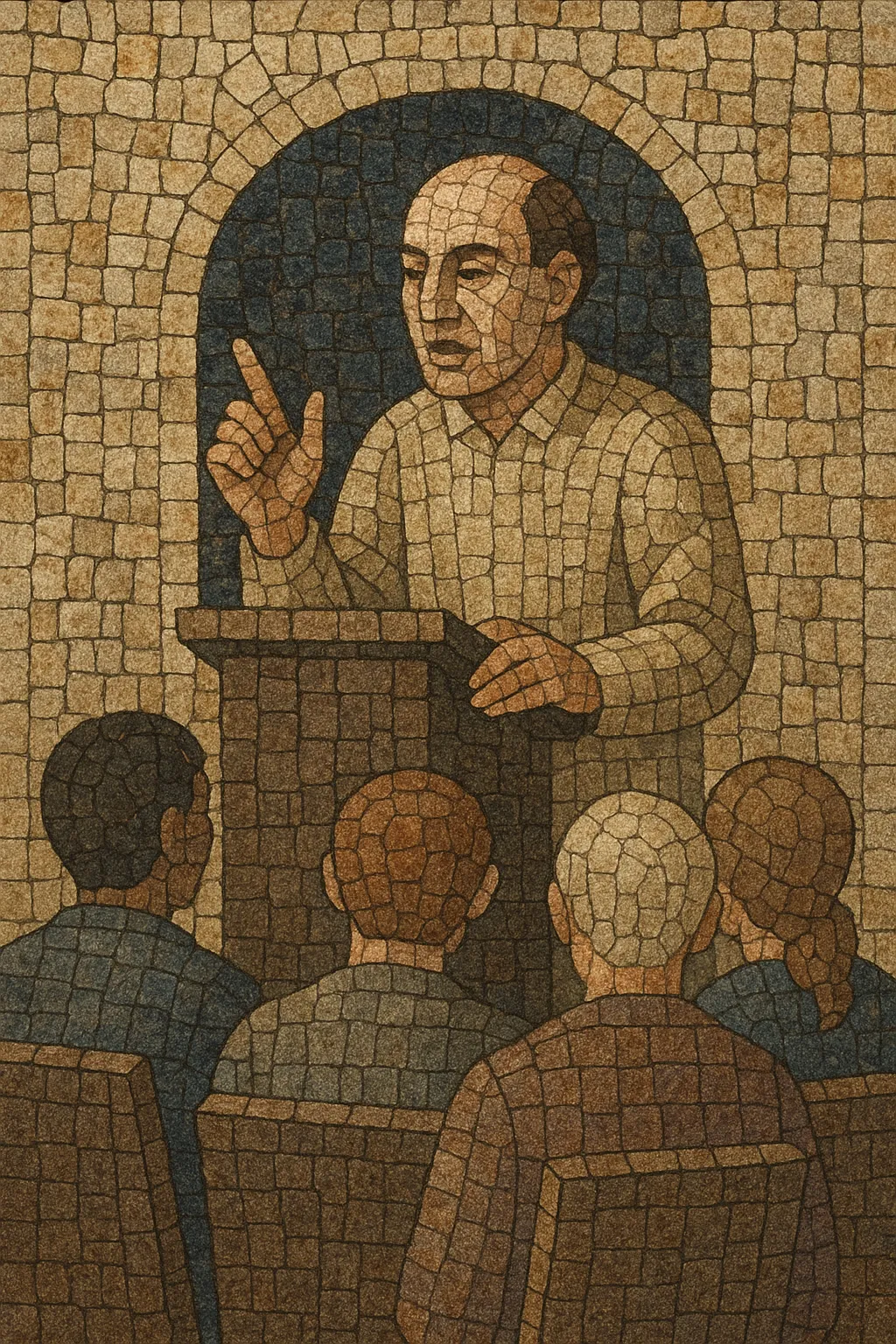Lecture is a spoken-word audio genre centered on the delivery of information and ideas by a single speaker (or a small panel) to an audience. It prioritizes clarity, structure, and rhetorical craft over musical accompaniment, with production focusing on intelligible voice capture and minimal sonic distraction.
As a recorded format, lecture evolved from public oratory and classroom teaching into publishable audio: first on phonograph cylinders and 78 rpm discs, later on LPs, cassettes, CDs, and today via digital streaming, podcasts, and open courseware. Topics span philosophy, science, social theory, religion, psychology, technology, and public policy.
A typical lecture has an introduction that frames the thesis, a body that progresses through signposted sections and examples, and a conclusion that synthesizes takeaways—sometimes followed by audience Q&A. Audience ambience, brief applause, or light cues may be present, but music beds are rare or restrained.
The lecture traces its roots to public oratory and university teaching traditions dating back centuries. As a recorded genre, it emerged in the late 19th century with the advent of the phonograph, when speeches and educational talks began to be captured and circulated. The United States’ lyceum and Chautauqua movements of the 19th century normalized public educational lectures, setting the cultural groundwork for recorded releases.
With gramophone and radio, explanatory speech found broader audiences. Educational broadcasting, civic talks, and academic addresses were documented and occasionally issued on shellac discs. Radio’s growth fostered a taste for informative, expository speech outside the classroom.
Hi‑fi home audio, LPs, and later cassettes catalyzed a vibrant market for recorded lectures. Philosophers, scientists, and spiritual teachers released lecture albums, and noncommercial broadcasters archived long-form talks. University culture and public intellectual life fed demand for accessible expert discourse.
Cassette and CD catalogs, campus media services, and dedicated educational publishers (e.g., course series and continuing-education labels) systematized distribution. Archival efforts preserved historical lectures, while contemporary speakers toured and released sets much like musical artists.
Digitization, streaming, and podcast infrastructures transformed access and discoverability. Open courseware, conference platforms, and MOOCs popularized polished lecture delivery at scale. Today, the genre spans archival recordings, university series, conference talks, and independent educational creators—often presented with chaptering, transcripts, and supplemental materials.


